Optics
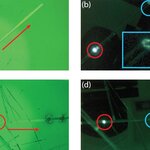
Physicists investigating tubular biological microstructures that showed unexpected luminescence after heating. Bioinspired peptides, like the ones investigated, could be useful for applications in optical fibers, biolasers and future quantum computers.
The luminous peptide microstructures self-assemble in a water environment. After heating them with a laser, they showed luminescence in the green range of the optical spectrum.
Sergey Semin from Radboud University explains, "The optical activity in the green range was a surprise for us. According to our theories, the molecular structure of our…

Topological transport of light is the photonic analog of topological electron flow in certain semiconductors.
In the electron case, the current flows around the edge of the material but not through the bulk. It is "topological" in that even if electrons encounter impurities in the material the electrons will continue to flow without losing energy.
In the photonic equivalent, light flows not through and around a regular material but in a meta-material consisting of an array of tiny glass loops fabricated on a silicon substrate. If the loops are engineered just right, the topological feature…
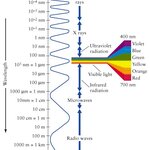
We all understand light has a wide electromagnetic spectrum and we only see a small band of that. In physics terms, that is between 400 - 700 nanometers and they show up as colors,from violet to red.
We can't see in the ultraviolet radiation spectrum because it is a shorter wavelength than what we can detect - violet - which is why it's in the name, and we can't see infrared because its wavelength is longer than red, which is why the name is infrared.
We can wear glasses that translate those bluer than blue and redder than red colors and now researchers have created a 'nanocamera' that…
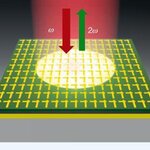
Lasers are ubiquitous but there are still wavelengths for which only large and expensive ones exist, or none at all. Remote sensing and medical applications call for compact laser systems, for example with wavelengths from the near infrared to the Terahertz region and now researchers at the Technische Universitaet Muenchen and the University of Texas Austin have developed a 400 nanometer thick nonlinear mirror that reflects frequency-doubled output using input light intensity as small as that of a laser pointer.
For a given input intensity and structure thickness, the new nonlinear…
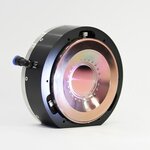
The high power needed to cut or weld using a laser beam creates its own problem: the beam’s energy deforms the mirrors that focus it. When that happens, the beam expands and loses intensity.
A new type of mirror is being presented at the Optatec trade fair in Frankfurt next week - it can deform itself to correct deformation the laser beams it controls.
Lasers are used in manufacturing to cut materials or weld components together. Laser light is focused to a point using various lenses and mirrors obviously, the smaller the focal point and the higher the energy, the more accurately…

If you have ever seen set pieces from a science-fiction show, you have probably been amazed at how cheap and silly the whole things looks. That was the initial concern with high-definition television too. Standard definition hid a lot of cosmetic defects in people and things that are quite obvious in the real world.
Lighting can do the same thing in the real world, of course. Everyone has had a table in their place that looked fine, only to open the windows and have natural light reveal a layer of dust.
In better light, even your clothes won't look as white. For years,…
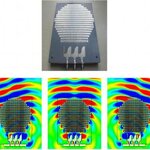
An array of tiny, metallic, U-shaped structures deposited onto a dielectric material creates a new artificial surface that can bend and focus electromagnetic waves the same way an antenna does.
The team behind this is calling it the first broadband transformation optics metasurface lens, may lead to the creation of new types of antennas that are flat, ultra low-profile or conformal to the shape of curved surfaces. The new lens was fabricated by Tie Jun Cui and colleagues at Southeast University in Nanjing, China and is an example of a metasurface or metamaterial -- an artificial material…
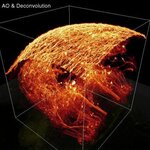
The complexity of biology can befuddle even the most sophisticated light microscopes because biological samples bend light in unpredictable ways, returning difficult-to-interpret information to the microscope and distorting the resulting image.
New imaging technology developed at the Howard Hughes Medical Institute's Janelia Farm Research Campus rapidly corrects for these distortions and sharpens high-resolution images over large volumes of tissue.
The approach, a form of adaptive optics, works in tissues that do not scatter light, making it well suited to imaging the transparent…
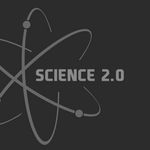
Exposure to short wavelength, blue, light during the biological day directly and immediately improves alertness and performance.
In order to determine which wavelengths of light were most effective in warding off fatigue, the researchers teamed with George Brainard, PhD, a professor of neurology at Thomas Jefferson University, who developed the specialized light equipment used in the study. Researchers compared the effects of blue light with exposure to an equal amount of green light on alertness and performance in 16 study participants for 6.5 hours over a day. Participants then rated how…
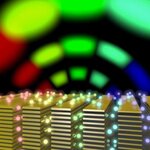
A project to develop fast-blinking LED systems for underwater optical communications has led to discovering that an artificial metamaterial can increase the light intensity and "blink speed" of a fluorescent light-emitting dye molecule.
The nanopatterned layers of silver and silicon in the new material sped up the molecule's blink rate to 76 times faster than normal, while producing an 80-fold increase in its brightness.
Extreme blinking speed – ultrafast modulation – in blue and green LEDs is a missing link that is necessary for increasing the rate at which information can be sent via…